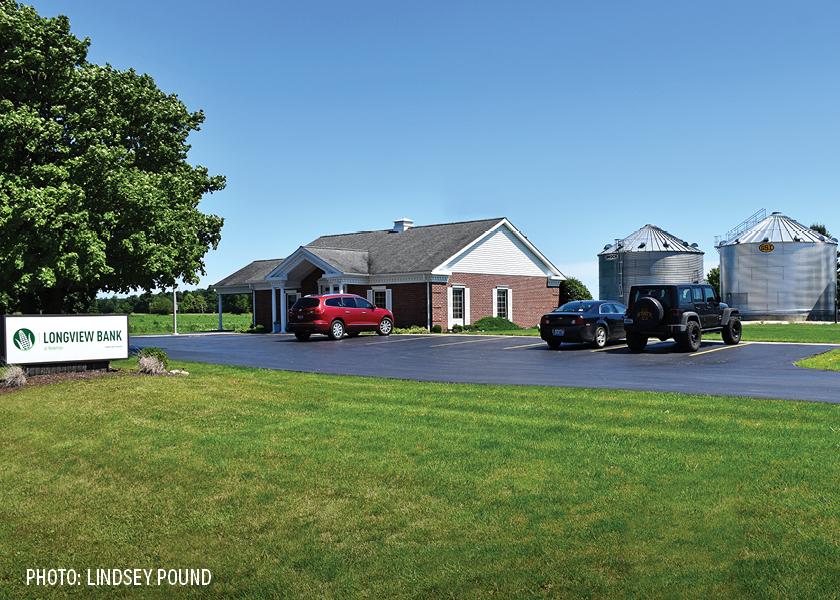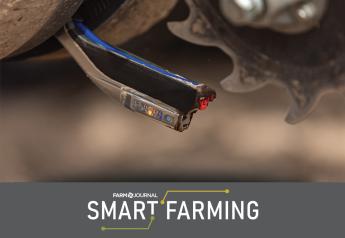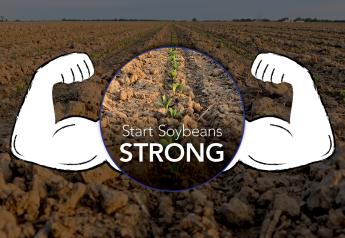Small-Town Bank CEOs are Cautiously Optimistic, says Rural Mainstreet Index Survey

For the second month in a row, the Rural Mainstreet Index (RMI) showed a positive sentiment in general among rural bank CEOs located across a 10-state region, with emphasis in the Midwest.
The region’s overall reading in May climbed to 55.8 from April’s 50.1, says Ernie Goss, chair in regional economics at Creighton University’s Heider College of Business. Even so, only 11.5% of the bankers reported improving economic conditions for the month, with 88.5% indicating no change in economic conditions from April’s slow growth.
The Index ranges between 0 and 100, with a reading of 50.0 representing growth neutral.
Interest Rate Hikes Put Pressure On Farmers
“Things are looking more positive for businesses on rural Main Street, but less positive for the agricultural sector,” Goss told AgriTalk Host Chip Flory earlier this week. “Farming is not quite as strong now as what we saw at this time last year, and even earlier this year. With the higher costs for the farm sector – especially interest rate increases – that's putting a little pressure on farmers. When we asked them about farmland prices, these CEOs are not nearly as positive looking forward.”
Bankers reported that non-pasture farmland prices in their area grew by an average of 4.3% over the past 12 months. However, they project 0.0% price growth for the next 12 months. Read more about the issue here: Sudden Slowdown? Farmland Expert Sees Fewer Buyers, More No Sales And a Plateau in Prices
Goss helped develop and implement the monthly RMI survey, which gathers economic insights from bank CEOs in approximately 200 rural communities with an average population of 1,300.
Will More Banks Report Insolvency Challenges?
Flory raised the question of whether rural banks are healthy or entering any financial headwinds, given the expectation of lower farmland prices and lower commodity prices this year. In the process, Flory also referenced the farm crisis of the 1980s. “The farm crisis got really, really serious when it turned into a Savings & Loan crisis, as well,” he recalls.
Goss’s take is that rural banks are doing reasonably well, though their deposits are down—at the second-lowest rate since the RMI monthly survey began in 2006.
“That’s not good, of course, but when we come to the overall health of rural banks, they remain very positive, but they’re very concerned about having to pay for the failures of the regional banks—Silicon Valley Bank, Signature Bank and First Republic,” Goss told Flory.
The RMI survey reports that only 15.4% of bank CEOs anticipate the end of the banking insolvency crisis, while the remaining 84.6% expect some banks to continue to report insolvency challenges.
“The liquidity problem will continue for some time, and we will see more regulation because of it,” said James Brown, CEO of Hardin County Savings in Eldora, Iowa, in a news release Goss’s office distributed. “And as a bonus for their (regulators) being late to the table, we will all pay higher FDIC payments for as long as we can see.”
Likewise, Jeff Bonnett, CEO of Havana National Bank in Havana, Ill., said: “I hope that the ICBA and state community bank associations can be successful in clarifying my point as ‘community banks’ should NOT pay for this big bank mess with increased FDIC assessments.”
Mergers Are One Likely Outcome
Goss says part of the concerns bankers have dates back to the banking crisis in 2008-09, when the region surveyed lost between 40% and 42% of rural banks through mergers and insolvencies.
“Now, that's not going to happen this time, but nonetheless, we will see some mergers,” Goss told Flory.
Looking ahead to June, Goss says bank CEOs are concerned about the potential impact a potential rate hike by the Fed on June 14 might have on farmers and other rural business owners who are dealing with increasing costs and specific to commodity prices, weakened revenues.
“These rate hikes are just creating more problems than solutions right now,” Goss says. “Unfortunately, inflation continues to be much higher than the Fed's target, even while they've raised interest rates by five percentage points over the last year plus a few months.”
Mike Van Erdewyk, CEO of Breda Savings Bank in Breda, Iowa, echoed Goss’s concern. “Federal Reserve rate changes are being perceived as ‘paper cuts’ and not solving the problem.”
Debt Crisis Deliberations Could Influence Rate Hikes
Goss ventures the likelihood of a rate hike in June by the Fed at about 50-50.
“A lot of it depends on what happens with the debt crisis deliberations going on right now in D.C.,” he told Flory. “If that gets settled very quickly and positively, that would push the Fed toward a rate hike. Any other bank failures or bank problems could facilitate a pullback and less of a chance of a rate hike.”
Listen to the entire discussion on AgriTalk here:







